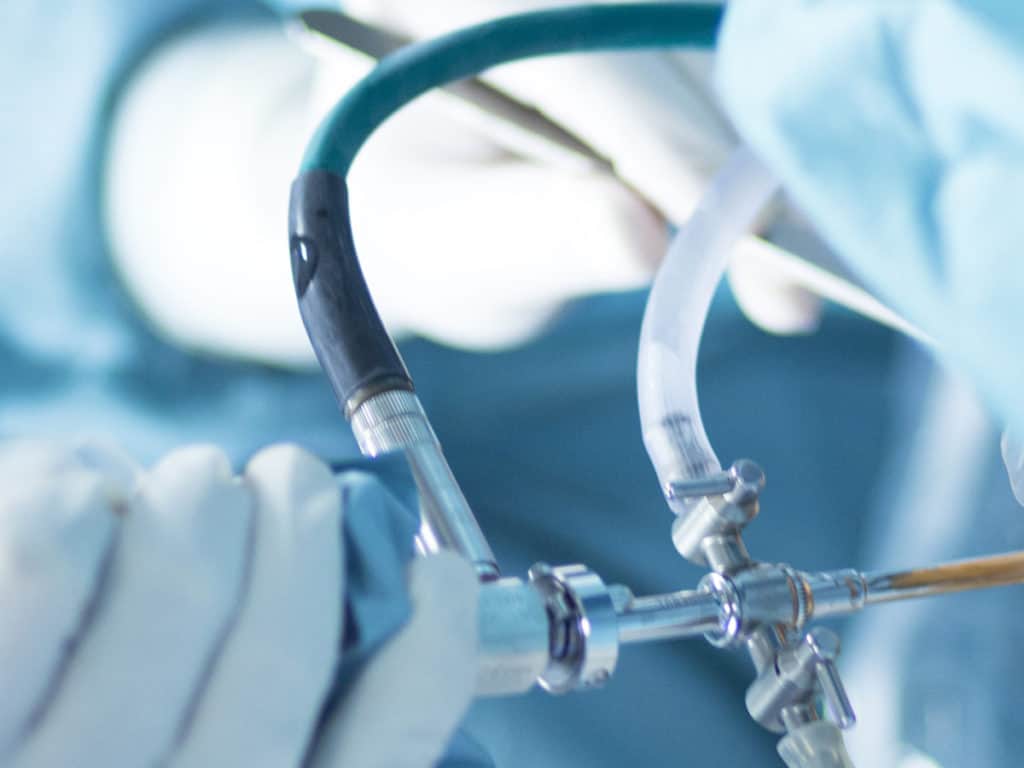If you are considering a surgical procedure such as a tummy tuck or breast reduction, and have done some research or talked to a friend who has had one of these procedures, you may have heard about “the drains” that typically come along with these surgeries. Many patients do admit that the drains are “the most annoying”, or “stressful” part of their recovery process, mostly because they just freak people out. Well, I wanted to explain to you why they are necessary and what to expect, to help alleviate some of the stress associated with their use (they really aren’t that scary 😊).
What are Surgical Drains?
The surgical drains Dr. Peters most typically uses are called Jackson-Pratt, or JP drains for short. They consist of plastic tubing with open holes on one end, and a “grenade-shaped” bulb on the other end. During surgery, the part of the tubing that contains the holes is placed underneath the skin at the surgery site. The tubing either exits your body through a part of your surgical incision, or through a small puncture site in the skin. The tubing is then attached to the bulb. The bulb is compressible, and once compressed, it creates a gentle vacuum-like suction to draw fluid out. This prevents fluid from accumulating at the surgical site, which is a good thing! The tubing is sometimes tapered (meaning it is slightly wider beneath the skin) to help minimize the risk of it coming out inadvertently. A tiny stitch in the skin is also used to hold it in place.
Why is a Surgical Drain Necessary?
Surgical drains are most commonly used to help prevent fluid accumulation, also known as seroma’s, from forming underneath the skin and in the tissues following certain surgical procedures. A seroma is a collection of fluid in a “pocket” beneath the skin. In most cases, small seroma’s will go away on their own, but larger seroma’s need either a drain to escape the body, or need to be aspirated with a needle if a drain is not present. If a seroma develops and goes untreated, it can lead to excessive scar tissue formation, it can increase your recovery time, lead to less than desirable aesthetic results, or it could become infected and thus require further treatment and management.
Another type of fluid accumulation beneath the skin, called a hematoma (which is a collection of blood) may also occur after surgery, and could be a sign of active bleeding. Having a surgical drain in place makes it easier to detect if this rare side effect does occur, and will allow for your surgeon to intervene in a more timely manner.
As you can see, having a surgical drain in place immediately following surgery, is very crucial in reducing the risk of fluid accumulation and the unwanted side effects that could result.
What Procedures Typically Require a Surgical Drain?
While every plastic surgeon has a slightly different protocol, and some may not even use surgical drains, Dr. Peters typically uses surgical drains for the following procedures:
- Tummy tuck or abdominoplasty
- Breast reduction
- Breast reconstruction
- Face Lift
- Neck Lift
- Brachioplasty or arm lift
What Exactly is the Fluid that is Coming Out?
At first, the fluid that is coming out is typically red in color as a lot of it is blood that has oozed from the surgical site. It should quickly start to lighten in color to look kind of like “Hawaiian punch Kool-aid” and become pink and then straw yellow. The yellow fluid should look like “clear urine” and is actually serous fluid, which is similar to the fluid you would see inside a blister. If the fluid is bright red in color, and remains that way for longer than a day, it could be indicative of hematoma formation. If the fluid becomes cloudy or has a foul odor, it could be indicative of an infection.
What do They Feel Like?
Usually, you can’t feel them under the skin, although certain movements such as twisting or turning, may cause you to feel their presence as the end of the tubing may poke into the skin. Most patients just feel slight irritation where they are inserted. What causes patient’s the most anxiety is having the drains removed. Everyone comes in on the day of their drain removal worried that it is going to hurt. After they are removed, every patient is typically relieved and just says “that felt really weird”.
How Long do Surgical Drains Stay in?
It depends on which surgical procedure you had done. The drains typically stay in place until they are draining less than 30ml’s of fluid per day. Face lift and neck lift drains usually come out within 1-3 days, as well as breast reduction drains. Tummy tuck drains typically stay in the longest, and may be left in place for 1-2 weeks. Patients who are more active typically experience greater fluid output, and may have the drains in place for longer.
So, if you are considering surgery that requires a drain, or are currently sitting at home with a drain in and are reading this, I hope it has alleviated some of the stress you may feel when it comes to having a drain in place after surgery! As always, we are here for you if you have any questions or concerns!



